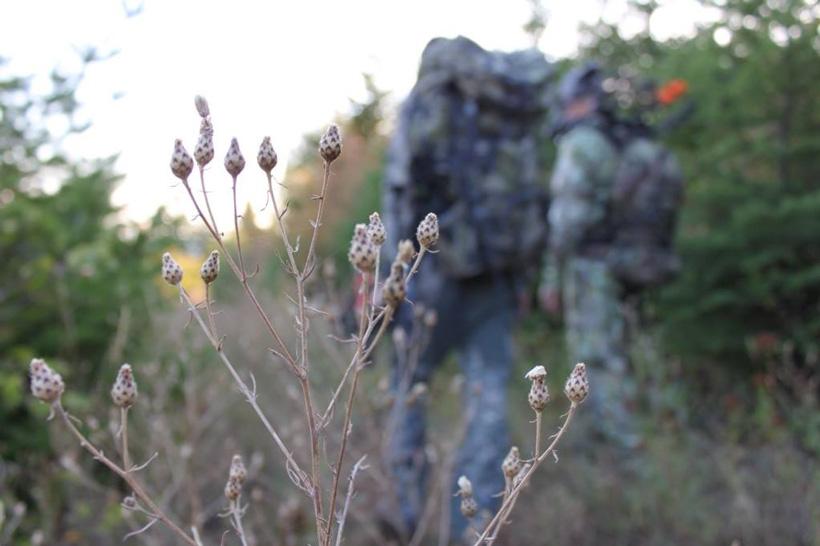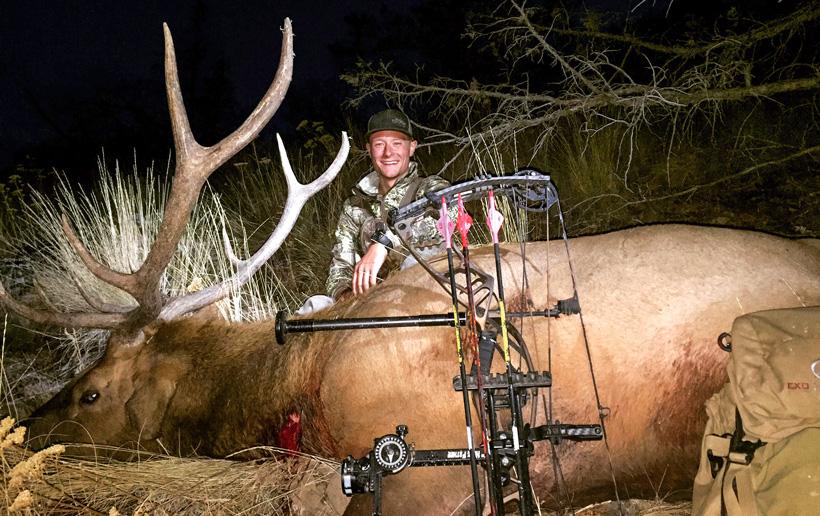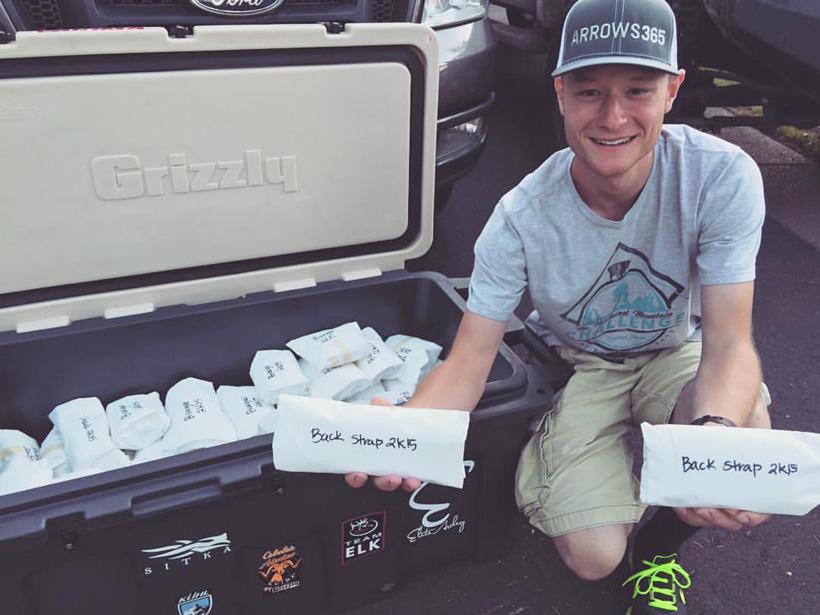






Keith Henderson with one of the archery bulls we took out of "Death Valley."

Mike Garrett with another Oregon archery bull elk taken out of the same canyon.

Zach's 2015 archery bull taken out of "Death Valley" in Oregon.

Cooler full of fresh elk meat from the 2015 season after utilizing the spot and stalk mule deer method on elk.
Spot and stalk elk hunting isn't a tactic you hear hunters using very often. With as many resources as there is today, learning how to find and call for elk is much more common. Yet, one method for elk hunting doesn’t get enough coverage: spot and stalk.
Having hunted my entire life, I’ve used various tactics and styles through the years to hunt elk. Bugling hard while running and gunning is a fairly common elk hunting tactic that has proved itself to work for many hunters time and time again. Yet, I’ve always hunted with a more patient, “looking for love” style, which utilizes many cow calls with a small bull bugle. This method has always help me find success and following blood trails each year.
While I’m still a huge fan of the typical bugling and cow calling style of elk hunting, I tried something different this past season that made me completely change the way I look at hunting elk. Mule deer hunting has been my true passion for as long as I can remember. For most of the hardcore mule deer hunters, sitting and glassing for hours feels as good as sitting on a beach drinking a cold beer. In comparison, hardcore run and gun elk hunters have a hard enough time sitting still for five minutes, waiting for the next bugle to chase.
It was a relief to find some elk so quickly! After bumping them, I finished descent and set up my spike camp. Hiking to where I wanted to hunt was a short walk around the ridge and I found a good vantage point to set up and glass. That night I ended up spotting several branch antlered bulls. As you can imagine, I was pretty stoked to say the least. As I observed the elk, I noticed that once they dropped into one of the canyons they would hold up in there for a good period of time. I also noticed that, in the morning, they would be out in the open with no possible way to sneak in or even get close enough to call. This is when I realized that I needed to hunt these elk like mule deer.
Having not ever hunted elk with a mule deer spot and stalk style before, I wasn’t sure exactly how things would pan out. This style, over the course of the next three weeks, proved to be the most fun and most action packed elk hunting I’d ever done. We would sit at our vantage point overlooking miles of terrain all morning long for hours, waiting for a group of elk to move into a good stalk opportunity. The trick was glass, glass and glass some more. The elk would find a good north facing slope to bed on every afternoon and, from that point on, it was go time. It would take us about 45 minutes to reach the furthest canyon, which seemed to be the hot spot for the elk (a.k.a Death Valley). We would wait for them to bed, then we’d pack up and make our move. Sneaking into the canyon was the hardest part about it. We would sometimes wait for hours in the blistering heat under a tree waiting for the thermals to switch so we could move further in. Once we were in the red zone, we would start picking apart the sage looking for elk. If we spotted them we would try to get as close to them as possible without bumping them and wait until evening to start calling. This is the part that’s different from many other hunters’ elk hunting style. Sitting and watching elk through a spotting scope all afternoon isn’t what many hunters would choose to do. Having patience and adaptability is the key with this style. We would wait until evening and the elk would get up to feed. From that point, we would start our calling sequence; soft cow calls trying to coax a lonely bull into range.
Keith Henderson with one of the archery bulls we took out of "Death Valley."
Over the course of three weeks, we harvested three bulls using this modified mule deer hunting tactic. All three of us harvested our bulls in “Death Valley.”
It was a fantastic year with crazy results. This article isn’t to brag or say that this is the only way to hunt elk. Actually, quite the contrary. I think there are many ways to be successful. In fact, I think that a run and gun style elk hunter could have eventually killed a bull in the country we were hunting. The purpose of this article was to share something that was a little different from what you read about all the time. It was a different area to hunt elk in using a different style to do it. We even had to use a different way of thinking what elk hunting is. While mule deer hunters understand the excitement of slipping our boots off and being that silent killer, I think everyone understands the excitement of hearing a bull bugle and being able to earn an opportunity on a DIY backcountry elk.
Whether we are hunting elk, mule deer, or any other animal, it is important to always try to learn from them. Read the animals, study their patterns and habits, and think outside the box. That’s the key to success in the backcountry.